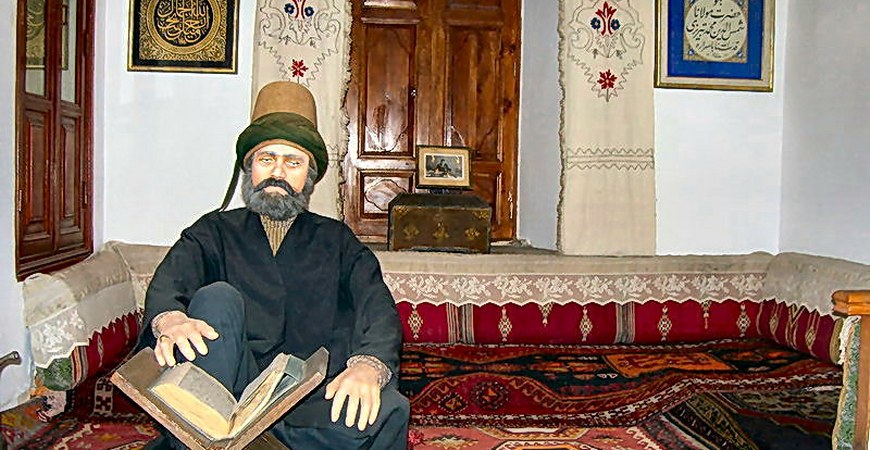The Silk Prayer Carpet in Konya Mevlana Museum- Chapter 3,
The most interesting thing about the carpet is the fact that it has written on it. The writing was first used as a decorative element in carpet design during the time of the Anatolian Seljuks. The carpets were woven in Konya during the Seljuk period often had decorative Cufic writing on the borders. These are the first examples of inscribed carpets. In later periods the technique spread from Konya to Anatolia and from here to Iran, and after the 15th century, this systematic development led to a style of carpet decorated with writing which formed a special group in the eastern art of carpet making. In the 17th century carpets decorated with couples began to be seen frequently. These carpets were usually woven for places or mosques, and examples of them can be seen in museums both in Turkey and abroad. The silk written prayer carpet in the Tomb of Mevlana, the gift of Yavuz Sultan Selim, is one of this group, but the oldest and finest among them. The fact that the carpet was never displayed, but immediately put away in a box can be seen from the worn lines where it was folded. In 1927 when the Tomb was opened as a museum this prayer carpet was removed from the box and displayed in a glass case. According to experts on carpets, the Silk Prayer Carpet has 144 knots per square centimeter, thus making a total of 2 million 197 thousand knots in all. It is estimated that the carpet took five years to weave. The Silk Prayer Carpet shines like lamps illuminating the mystic atmosphere of the Mevlana Museum, and every day hundreds and thousands of visitors stop to gaze at it. The utmost care is taken to preserve the shining, unfaded colors of the carpet which are like a bouquet of flowers among the other prayer carpets on exhibit. For the carpet, the hands which move it and the sultans which knelt on it are like a dream, but now it must be living happier days in Mevlana Museum.



































































































































